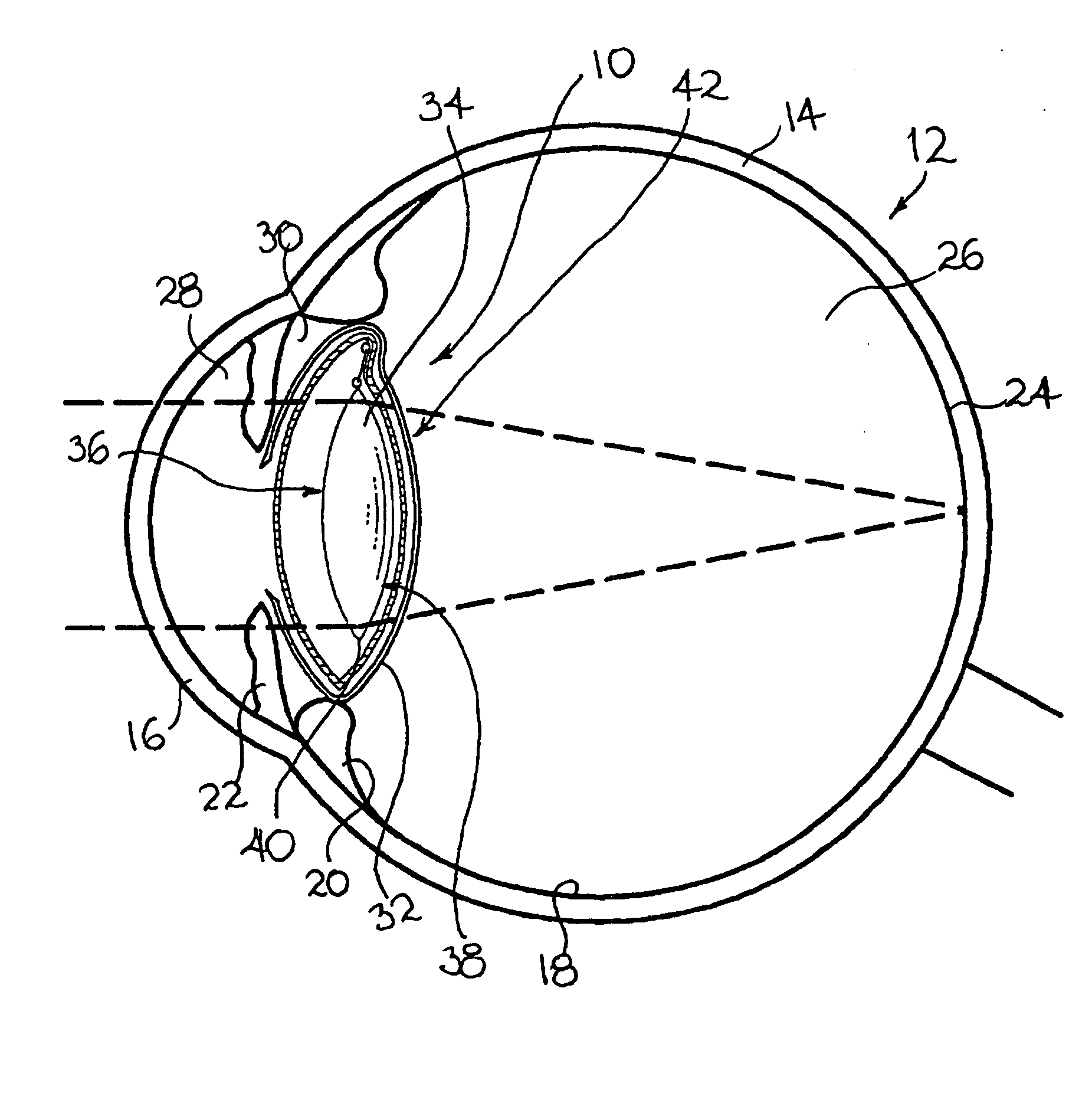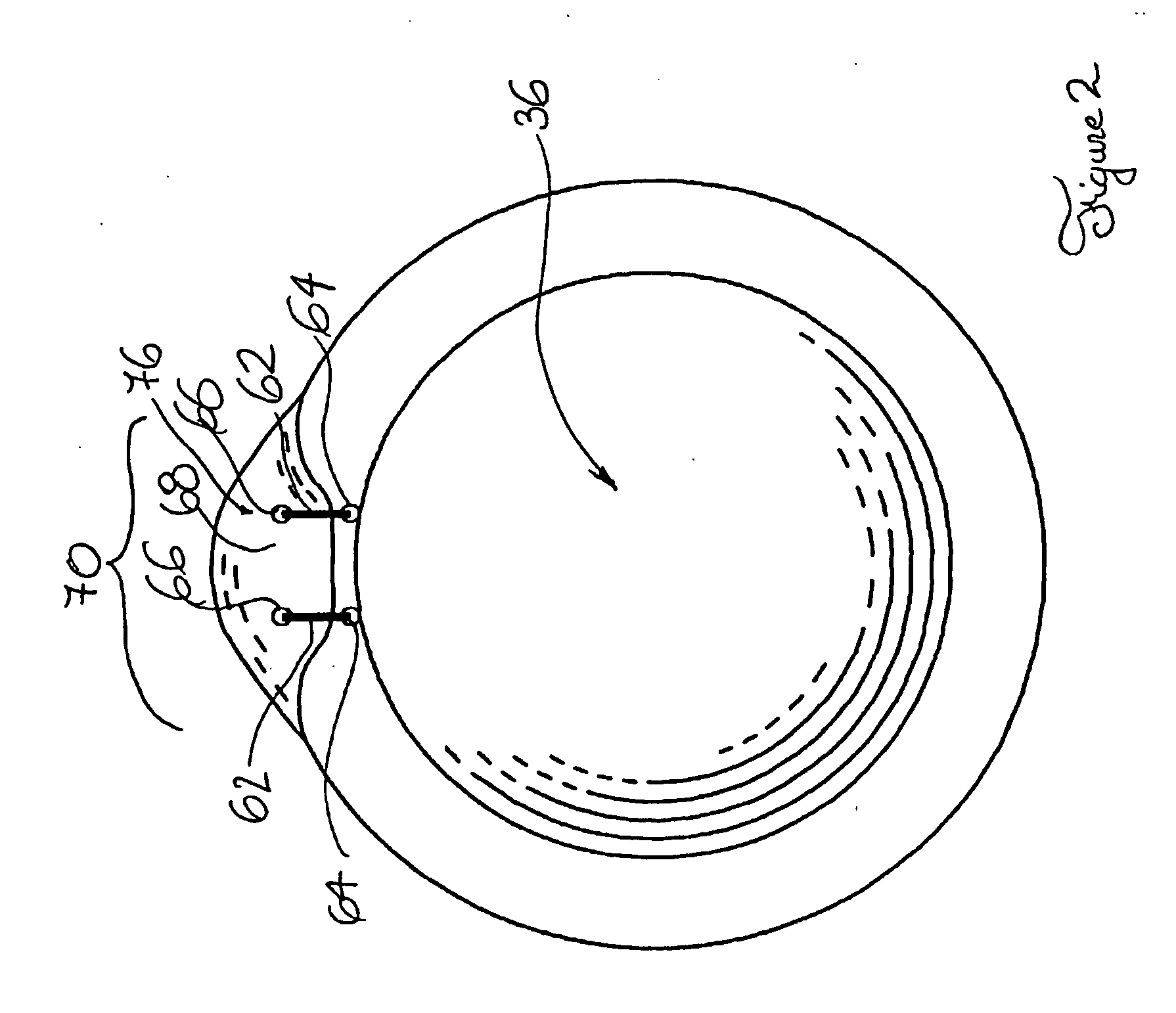Intraocular lens implant having accommodative capabilities
a technology which is applied in the field of intraocular lens and ocular lens implants having accommodative capabilities, can solve the problems of loss of ability to change the shape of the eye, progressive hardening of the eye lens, and fading vision
- Summary
- Abstract
- Description
- Claims
- Application Information
AI Technical Summary
Benefits of technology
Problems solved by technology
Method used
Image
Examples
Embodiment Construction
[0060] Referring to FIG. 1, there is shown an intraocular lens implant (10) in accordance with an embodiment of the present invention. The intraocular lens implant (10) is shown implanted within a schematized human eye (12).
[0061] As is well known in the art, the eye (12) has an outermost covering including a fibrous sclera (14) and a cornea (16). A pigmented vascular layer is positioned inwardly relative to the sclera (14). The pigmented vascular layer includes the choroid (18), the ciliary body (20) and the iris (22).
[0062] The eye (12) also includes a retina (24) positioned immediately under a pigmented epithelial layer. The eye (12) also includes a vitreous cavity (26) filled with a transparent gel called the vitreous humor.
[0063] The portion of the eye (12) located in front of the vitreous cavity (26) is divided into two chambers. An anterior chamber (28) extends between the cornea (16) and the iris (22). A posterior chamber (30) extends between the iris (22) and the vitreou...
PUM
 Login to View More
Login to View More Abstract
Description
Claims
Application Information
 Login to View More
Login to View More - R&D
- Intellectual Property
- Life Sciences
- Materials
- Tech Scout
- Unparalleled Data Quality
- Higher Quality Content
- 60% Fewer Hallucinations
Browse by: Latest US Patents, China's latest patents, Technical Efficacy Thesaurus, Application Domain, Technology Topic, Popular Technical Reports.
© 2025 PatSnap. All rights reserved.Legal|Privacy policy|Modern Slavery Act Transparency Statement|Sitemap|About US| Contact US: help@patsnap.com



